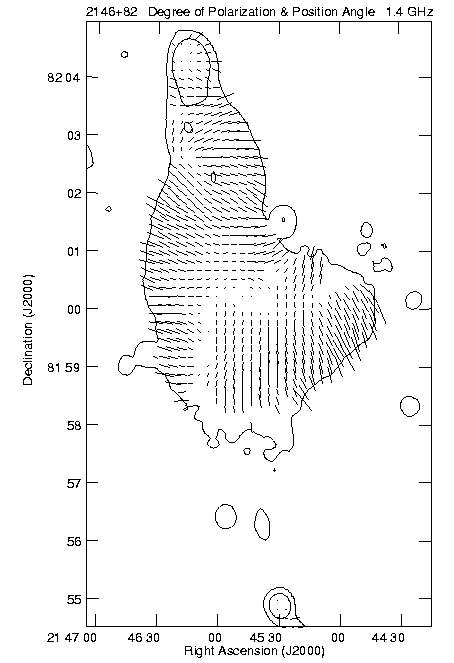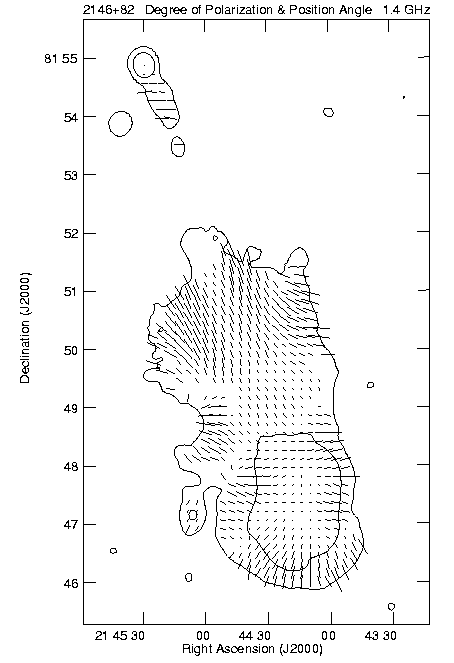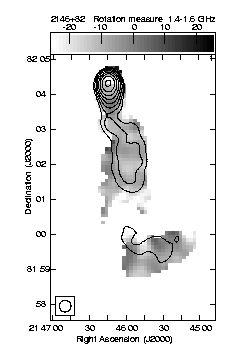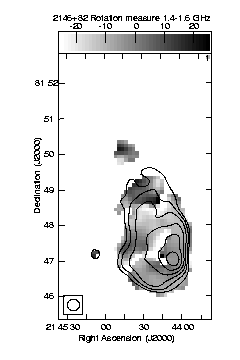


Next: Spectral Index Distribution
Up: Radio Observations
Previous: Association of Features


Figure 6: Distribution of degree of 1.4 GHz linear polarization p and E-vector
position angle over the north D (left) and south E (right)
lobes of the source at 13''
(FWHM) resolution, superposed on selected contours of total intensity.
A vector of length 15'' corresponds to p=0.5.
The polarization structure derived from the sensitive BnC configuration observations
is shown in Figure 6. The 1.4 and 1.6 GHz data
are sufficiently separated in frequency to enable us to measure
Faraday rotation but still maintain comparable surface brightness
sensitivity. The derived rotation measure images of the two lobes are
shown in Figure 7. The rotation measure distribution over
the north lobe is featureless but several filamentary rotation measure
structures can be seen over the southern lobe. The average rotation
measure is about the same in the two lobes, -9 rad m-2 in the
north and -8 rad m-2 in the south. The Faraday rotation measure
in the south lobe has a somewhat larger root mean square variation, 8
rad m-2 compared to 5 rad m-2 in the north.


Figure 7: Gray scale representation of the rotation measure at 20''
resolution with superimposed contours of the 1.6 GHz total
intensity at the same resolution.
The bar at the top gives the grayscale values and the resolution
is shown in the lower-left corner.
The north lobe is shown in the left and the south lobe on the right.
Fri Feb 4 16:02:06 EST 2000



